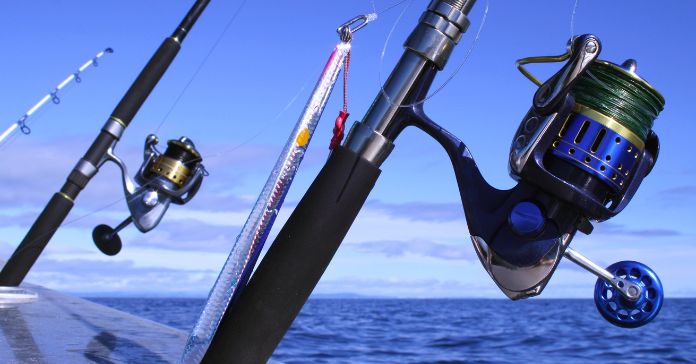
The right reel can make all the difference in your fishing endeavor, enabling you to cast further, retrieve more efficiently, and land the catch of the day. Whether a seasoned angler or a beginner looking to cast your first line, understanding the different types of fishing reels and their uses will maximize your experience on the water.
Spincast Reel
The spincast reel, also known as a closed-face reel, is the easiest type to use, making it perfect for beginners and children. This simplicity comes from its push-button design; you simply press the button while casting and release it when you reach your desired line length. The spincast reel operates with a fixed spool, which means the weight of the lure or bait draws out the line. Fishers usually pair this reel with light tackle, making it ideal for catching smaller fish species like panfish and bass.
When using a spincast reel, pair it with a medium-light to medium-power rod. This combination will provide the right balance and sensitivity for detecting bites. As for the fishing line, a monofilament line is recommended because it’s easy to handle and has good line strength for most freshwater fishing situations. However, due to its limited line capacity and lower gear ratios, the spincast reel isn’t the best choice for long-distance casting or heavy line weights.
Baitcasting Reel
Baitcasting reels, or baitcasters, are more complex and require a higher skill level to use effectively. They’re the go-to choice for experienced anglers seeking precision and control. Baitcasters operate with a revolving spool, allowing the angler to control the distance and speed of the cast by applying thumb pressure to the line. This makes these reels excellent for techniques that require pinpoint accuracy, such as pitching and flipping.
Pairing a baitcasting reel with a medium-heavy to heavy-power rod is essential for handling larger fish and heavier lures. Braided or fluorocarbon lines are best with this type of reel because they offer high strength and low stretch, which is great for feeling subtle bites and setting the hook. Despite their complexity, baitcasting reels are versatile and useful in a wide variety of fishing scenarios, from freshwater bass fishing to saltwater game fishing. But remember—they require practice to master, so patience is key.
Spinning Reel
Spinning reels, or open-face reels, strike a balance between ease of use and versatility, making them popular among anglers of all skill levels. They work with a fixed spool, but unlike the spincast reel, it is exposed rather than enclosed. To cast, you flip the bail, hold the line with your finger, and then release the line as you swing the rod. Spinning reels are great for various fishing methods, including live bait fishing and lure fishing.
A light- to medium-power rod is best with spinning reels for a balanced setup. They work well with monofilament and braided lines, and their line capacity is greater than that of spincast reels, allowing for longer casts. A spinning reel’s drag system also provides smooth, consistent pressure, making them suitable for catching species that make strong runs. Some spinning reels even feature line counters to make them more suitable for troll fishing. Ultimately, knowing everything about troll fishing and other fishing techniques helps you maximize your reel’s performance.
Understanding the different types of fishing reels and their uses is all about matching your skill level, fishing technique, and target species. Fishing is as much about the journey as it is about the catch. So equip yourself with the right reel, pair it with the right gear, and enjoy the experience that each cast brings.







